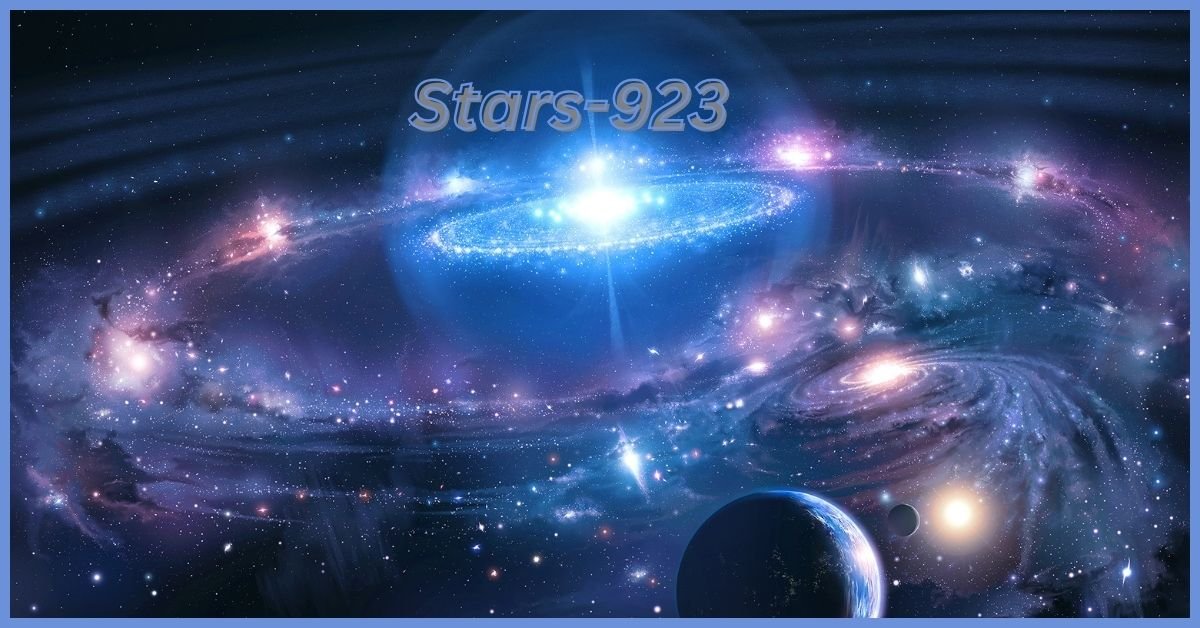Introduction to Stars-923
Stars-923 is a distant galaxy that has captured the imagination of astronomers and astrophysicists worldwide. This celestial body, located millions of light-years away, offers a glimpse into the vast complexities of the universe. As we explore the wonders of Stars-923, we uncover the mysteries that make this galaxy a significant object of study in modern astronomy.
The Discovery of Stars-923
The discovery of Stars-923 marked a milestone in the field of astronomy. This galaxy was first identified through advanced telescopic technology, which allowed scientists to peer deeper into the cosmos than ever before. A combination of optical and radio telescopes made the discovery possible, providing detailed images and data. The historical context of its discovery highlights the rapid advancements in space exploration technology, pushing the boundaries of our understanding of the universe.
Location and Distance
Stars-923 is located in a remote part of the universe, far beyond our Milky Way. Measuring the distance to such a faraway galaxy involves complex techniques like redshift calculations, which analyze its light to determine its speed and distance from Earth. The galaxy’s position in the cosmos is significant because it sits in a region where few other galaxies have been observed, making it an intriguing subject for study.
Structure and Composition
The structure of Stars-923 is as complex as it is fascinating. Composed of billions of stars, the galaxy also contains massive amounts of interstellar gas and dust. Among its many stellar populations are regions of high star density, likely housing star clusters and possibly even black holes. The elements found within Stars-923 mirror those of other galaxies but with unique variations that suggest different evolutionary paths. The galaxy’s structure is a subject of ongoing research, particularly in understanding how it differs from other known galaxies.
The Stars of Stars-923
Stars-923 hosts diverse stars, each contributing to the galaxy’s overall luminosity and energy output. The stars range from young, hot blue stars to older, more excellent red giants. This diversity provides valuable data on the life cycles of stars and how they evolve within different environments. Understanding the characteristics of these stars helps astronomers predict the galaxy’s future behaviour and its potential for forming new stars.
The Role of Dark Matter
Dark matter plays a crucial role in the structure and stability of Stars-923. Although it cannot be observed directly, its presence is inferred from the galaxy’s rotation curve, which shows that visible matter alone cannot account for the gravitational forces at play. Studies suggest that dark matter could make up a significant portion of the galaxy’s mass, influencing everything from star formation to the movement of celestial bodies within Stars-923.
Nebulae and Star Formation
Nebulae are the stellar nurseries of the universe, and Stars-923 is no exception. The galaxy contains several nebulae where new stars are born. These regions are rich in gas and dust, providing the raw materials for star formation. The process begins when gravitational forces cause the gas and dust to collapse into a dense core, eventually igniting nuclear fusion and forming a new star. Studying these nebulae in Stars-923 offers insights into the early stages of stellar evolution.
Cosmic Phenomena in Stars-923
Stars-923 is home to several cosmic phenomena that intrigue scientists. Among these are supernovae, the explosive deaths of massive stars, and gamma-ray bursts, among the most energetic events in the universe. These phenomena provide critical information about the life cycles of stars and the extreme conditions that can exist in galaxies. Studying these events in Stars-923 helps scientists understand similar occurrences in other parts of the universe.
Comparative Analysis
Several differences and similarities emerge when comparing Stars-923 to our own Milky Way. While both galaxies contain diverse stellar populations, Stars-923’s structure is more irregular, possibly due to past interactions with other galaxies. This irregularity gives Stars-923 a unique appearance and suggests a different evolutionary history. Understanding these differences helps astronomers place our galaxy in a broader cosmic context.
Stars-923 in Popular Culture
Stars-923 has become popular culture, often inspiring science fiction writers and filmmakers. Its mysterious nature and distant location make it an ideal setting for stories about space exploration and the unknown. These cultural references entertain and spark interest in astronomy and scientific efforts to understand galaxies like Stars-923.
Scientific Significance
The study of Stars-923 holds significant scientific importance. By examining this distant galaxy, astronomers can test theories about galaxy formation and evolution. The data collected from Stars-923 also contribute to our understanding of the universe’s large-scale structure. This research has the potential to answer fundamental questions about the nature of galaxies and the forces that shape them.
Future Exploration
Future missions to study Stars-923 are already being planned. These missions aim to gather more detailed data about the galaxy’s composition, star formation activity, and the role of dark matter. Advanced telescopes and space probes will be instrumental in these efforts, potentially uncovering new phenomena and deepening our understanding of Stars-923.
Challenges in Studying Stars-923
I am studying a galaxy as distant as Stars-923, which presents numerous challenges. The vast distance makes data collection difficult, requiring susceptible instruments and long observation times. Additionally, the technological limitations of current telescopes can restrict the amount of detail that can be observed. Overcoming these challenges is crucial for gaining a deeper understanding of Stars-923.
The Mystery of Stars-923
Despite the progress made in studying Stars-923, many mysteries remain. The exact composition of its dark matter, the details of its star formation processes, and the origins of its irregular structure are all areas of ongoing research. These unanswered questions keep Stars-923 at the forefront of astronomical study as scientists strive to unlock the secrets of this enigmatic galaxy.
Conclusion
Stars-923 is a cosmic marvel, offering a wealth of information about the universe’s structure and the forces that govern it. As we continue to explore this distant galaxy, we deepen our understanding of not only Stars-923 but also the broader cosmos. The study of Stars-923 exemplifies the endless quest for knowledge that drives astronomy forward, pushing the boundaries of what we know about the universe.
FAQs
What is Stars-923?
Stars-923 is a distant galaxy located millions of light-years from Earth. It is known for its unique structure and stellar phenomena.
How was Stars-923 discovered?
Stars-923 was discovered using advanced telescopes that allowed astronomers to observe deep into space, beyond the reach of traditional observation methods.
What types of stars are found in Stars-923?
Stars-923 contains many stars, including young, hot stars and older, more excellent stars, contributing to the galaxy’s diverse stellar population.
Why is dark matter important in Stars-923?
Dark matter is believed to make up a significant portion of Stars-923’s mass, influencing the galaxy’s structure and the movement of its stars.
What are some cosmic phenomena observed in Stars-923?
Notable cosmic phenomena in Stars-923 include supernovae and gamma-ray bursts, both of which provide valuable insights into the life cycles of stars.
What challenges do scientists face when studying Stars-923?
The primary challenges include the galaxy’s vast distance and the limitations of current technology, which make detailed observations difficult.





